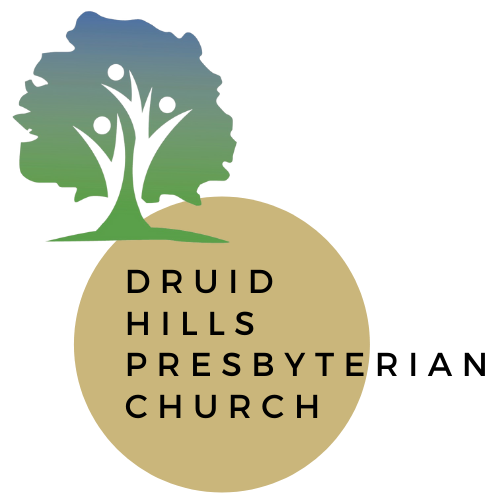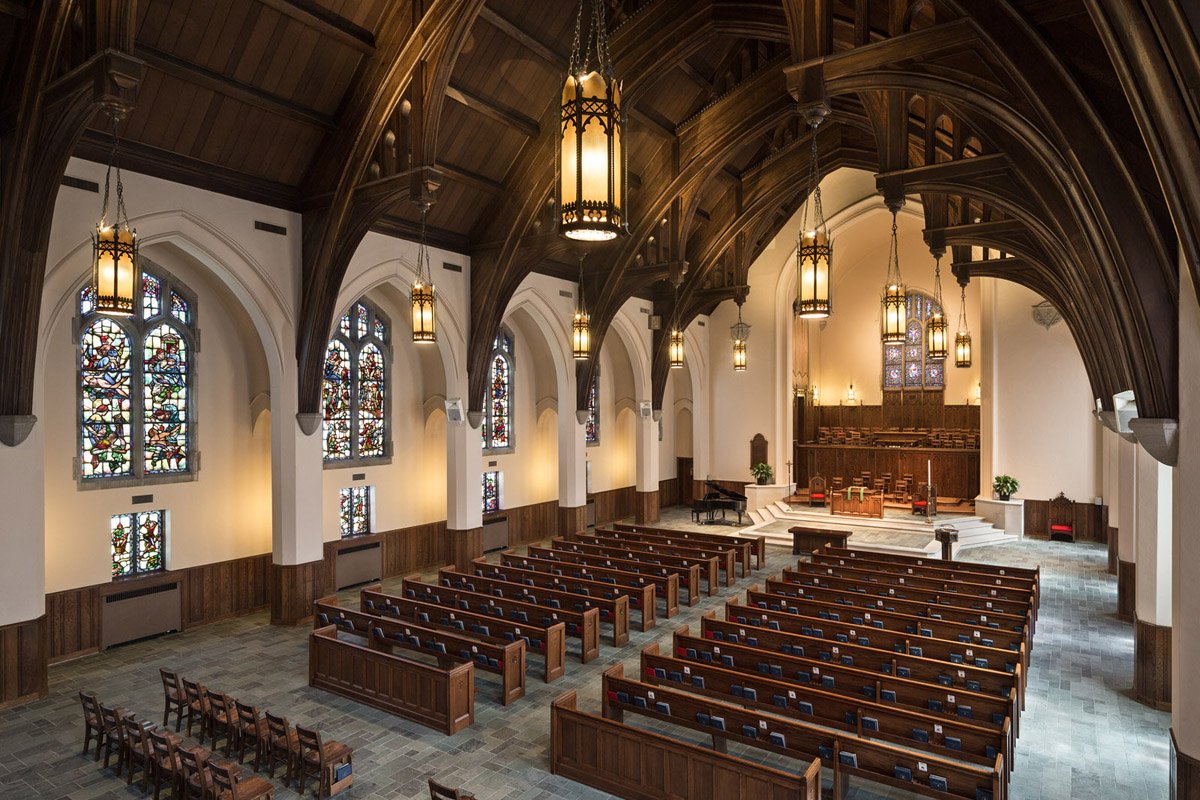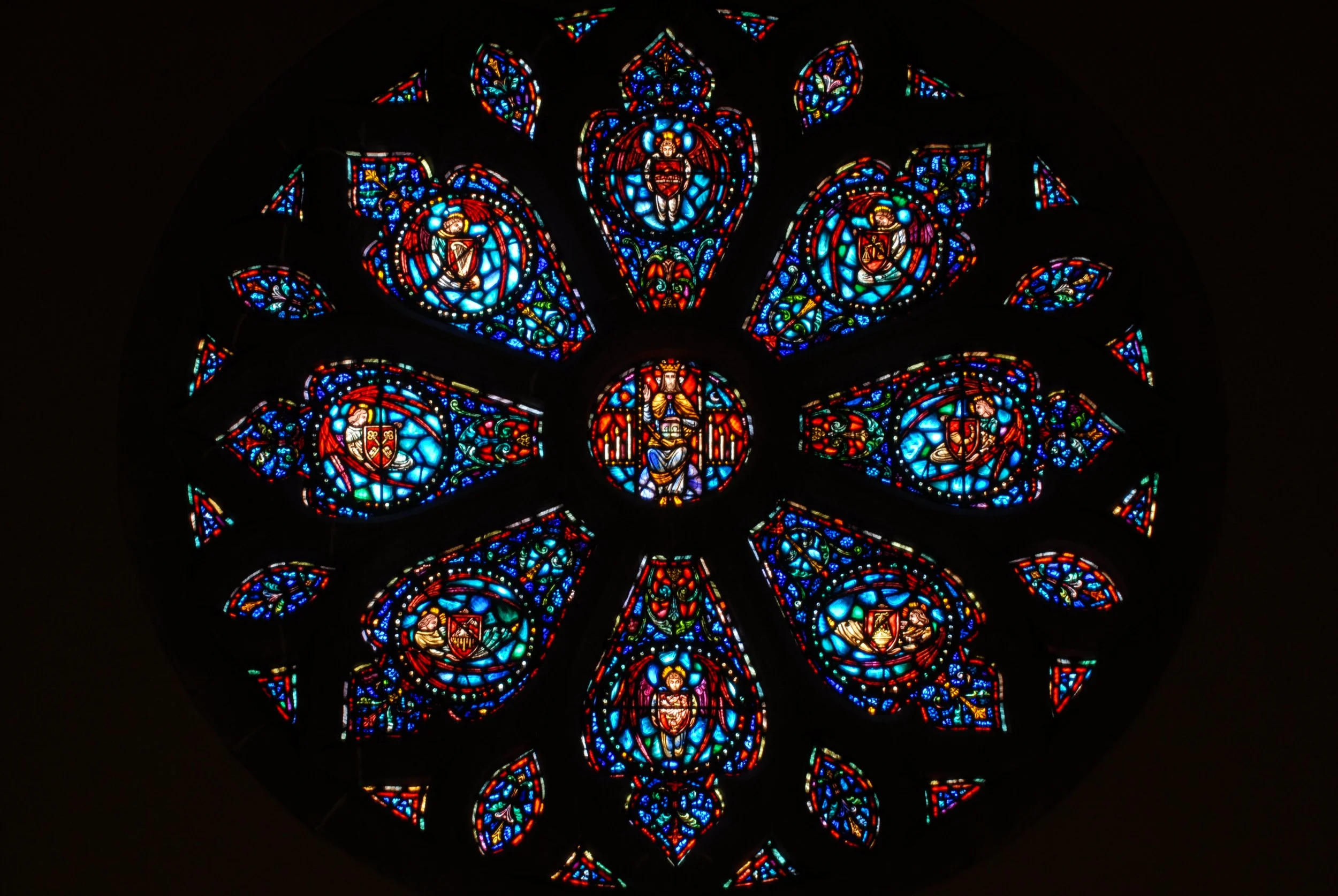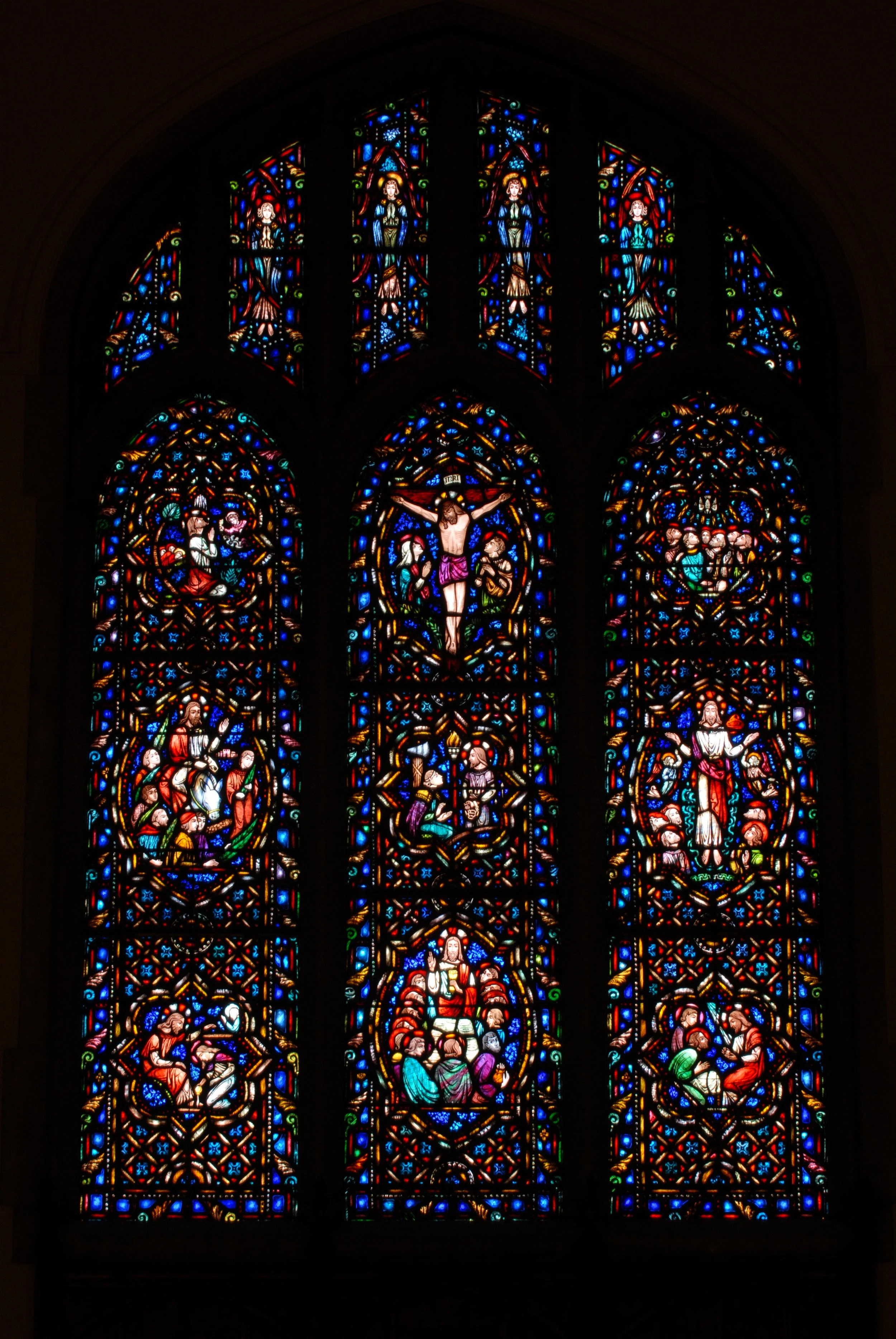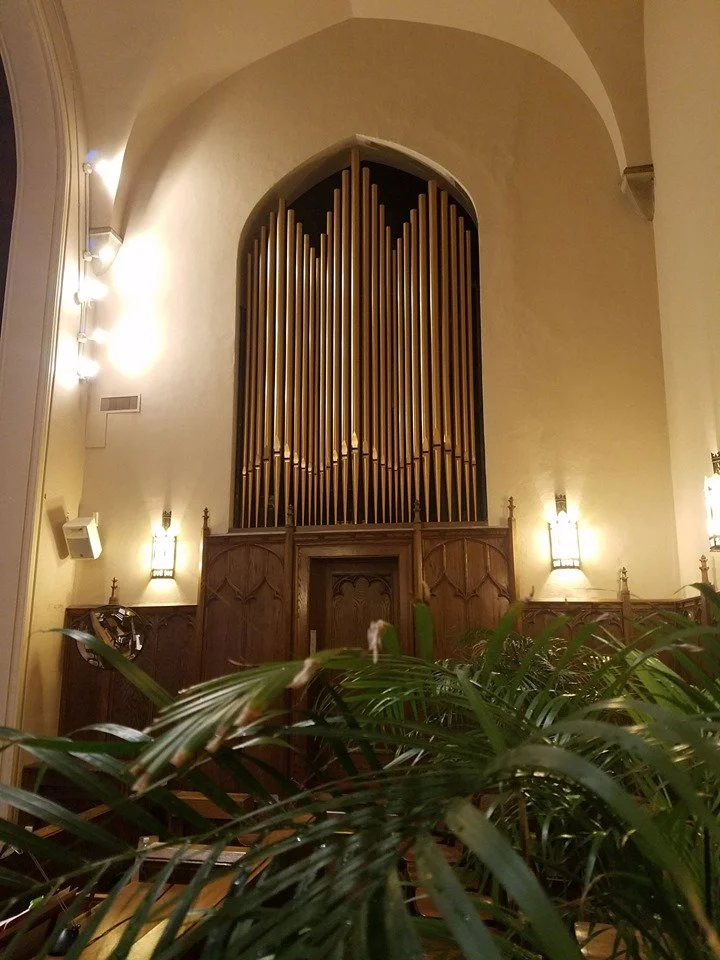Sanctuary
We worship in a historic sanctuary which was built in 1940 and designed by the prominent architect Francis Palmer Smith. This building was designed in the French Gothic style as evidenced by the pointed arches above the chancel and aisles and at the top of the windows. The Gothic ceiling features impressive arched timbering reminiscent of London’s Westminster Hall. Pews are arranged in two sections with a center aisle as well as in overflow seating in the balcony. A loft behind the chancel accommodated the choir which has since been relocated to the chancel. The original chancel was much smaller than at present, with a pulpit at its right end. Other prominent features of the sanctuary are its stained glass windows and pipe organ.
In 2013, the sanctuary was remodeled to accommodate the variety of needs of modern worship. Other prominent features of the sanctuary are its stained glass windows and pipe organ, described below.
Sanctuary Stained Glass
Our sanctuary is noted for its gorgeous set of Willet stained glass windows. These windows are in the long tradition of churches installing stained glass to explain Bible stories to people who could not read a book. In that spirit, these windows tell the story of God's gracious work of salvation unveiled through the ages from Creation to the Second Coming of Christ.
The upper windows along one length of the sanctuary portray Old Testament stories (Creation, Precursors of Christ, and Major Prophets), the birth of Jesus, 2 significant parables of Jesus (Good Samaritan and Prodigal Son). The lower windows on this side portray months of the year with their associated labors - sowing, gathering, threshing, baking, and so forth. On the other side, the upper windows show Jesus’ public ministry, the evangelists, the apostles, the work of Paul, and a window in tribute to later Christian missionaries. The lower windows on that side depict various fields of knowledge - mathematics, music, architecture, rhetoric, etc. The front round Passion window depicts the suffering and death of Christ. The round Rose Window on the western (Ponce) end of the building uses traditional emblems to depict Christ’s final victory. Together, the rich imagery of these lovely windows tells the story of God and the creation, such that anyone “reading” the windows can enjoy the story and find themselves within it.
The beautiful windows throughout our sanctuary were designed and produced by Henry Lee Willet of the Willet Studios in Philadelphia, now part of the Willet Hauser Glass Co. They were installed over several years from 1940 until 1948, despite the challenges of World War II. Willet was one of early 20th century America's most celebrated stained glass artisans and a dedicated Presbyterian educator. He used the finest traditional medieval techniques to produce these windows. Every piece of glass in the windows was hand-dyed using metal salts, then blown, cut, placed, painted, and assembled – all by hand. These methods are roughly one thousand years old. We invite all who enter our sanctuary to spend time viewing the windows.
To read more about our windows, please see A Soft Radiant Light by Mary-Elizabeth Ellard
Our Pipe Organ
While our sanctuary was being designed and built, the church leaders were planning for the sanctuary’s pipe organ, an instrument the church had never had before. The research was led by Mabel Stewart Boyter, the congregation’s pianist and eventual first organist, as well as consultant Wilbur H. Rowand, dean of music at Shorter College in Rome, Georgia. Their search led them to the Æolian-Skinner Organ Company in Boston, the premier pipe organ company in America at that time. That company designed and built our organ, led by their president, G. Donald Harrison, who was also the country’s foremost organ designer in that era.
The organ was completed in time for the opening of the sanctuary in September, 1940. Five years later, more pipes in the original design were added to the instrument. The organ received appropriate regular maintenance through the years but by the early 2000s it was showing the need for extensive repair and a plan was launched for its complete restoration. All known issues were repaired and the instrument was restored to its original design and specifications, including incorporating new ranks that were in the original design but were never installed due to insufficient funds in the 1940s.
Today the organ contains 2,401 pipes in 44 ranks controlled by a three manual console with 56 draw knobs. It finally contains all of the ranks that were in the original design. It is one of only 19 known G. Donald Harrison signature organs remaining in existence so we consider it a rare jewel. It is a cherished component of our weekly worship services and contributes to a variety of public events. For a complete specification list, click here.
